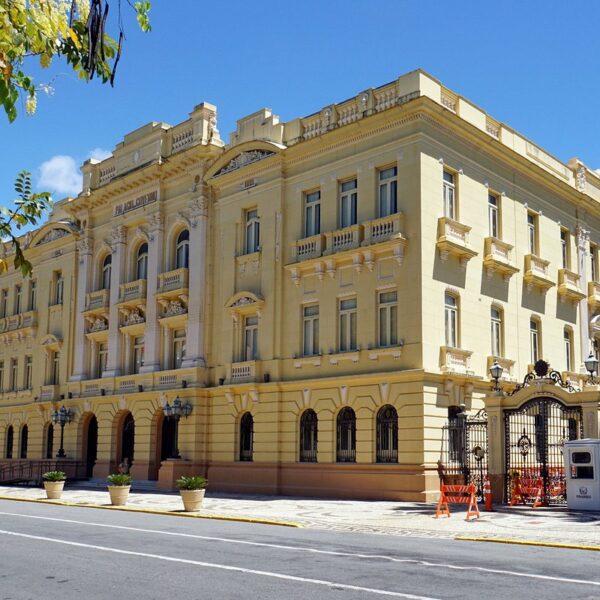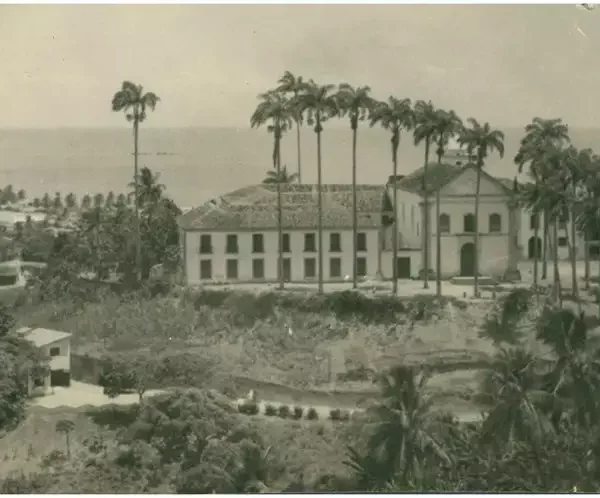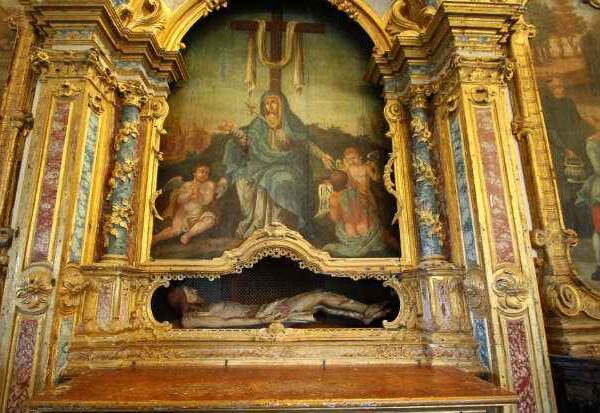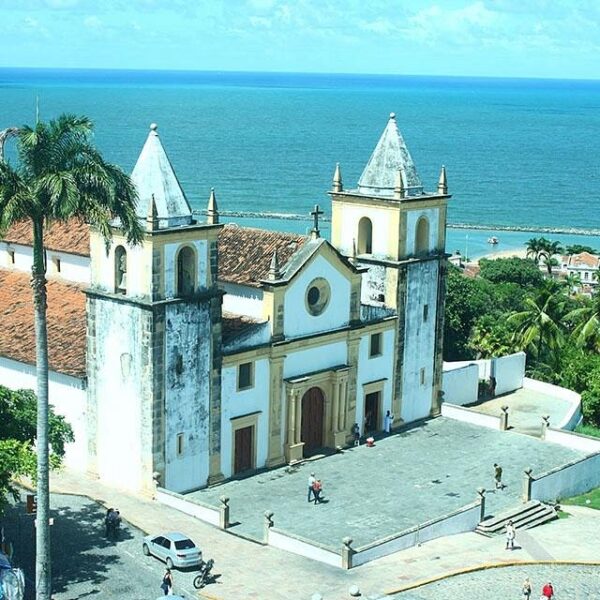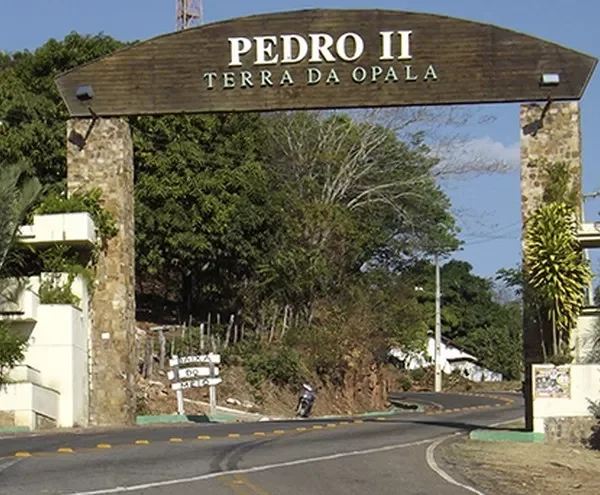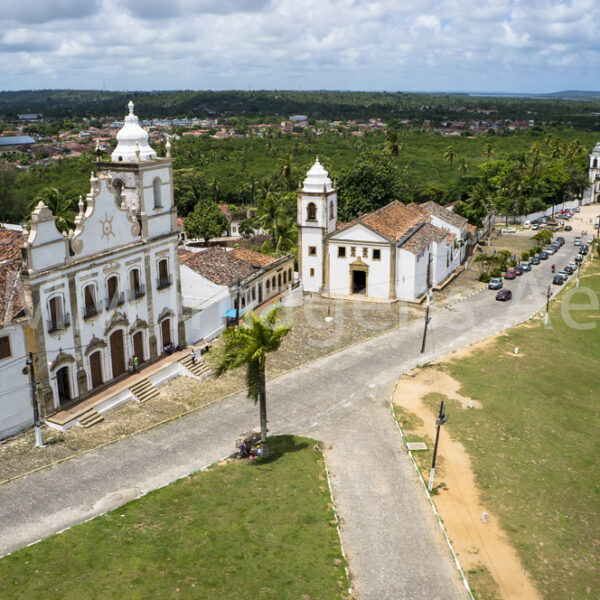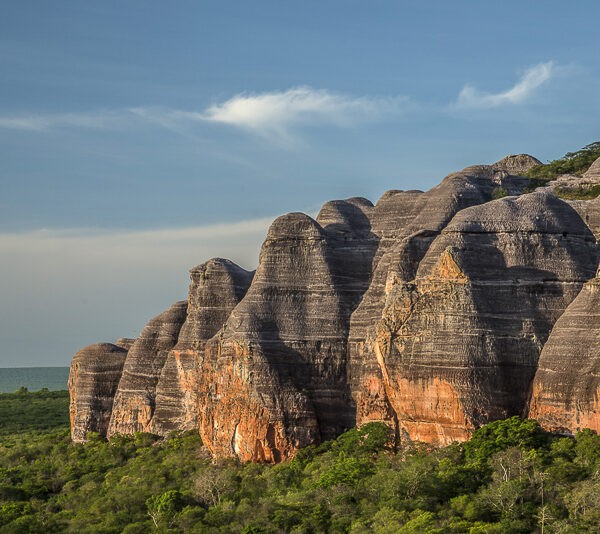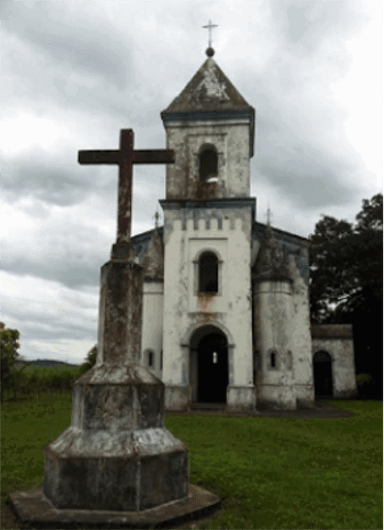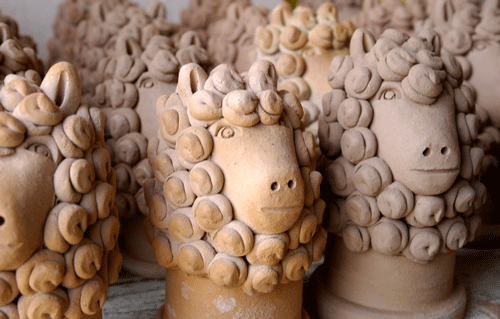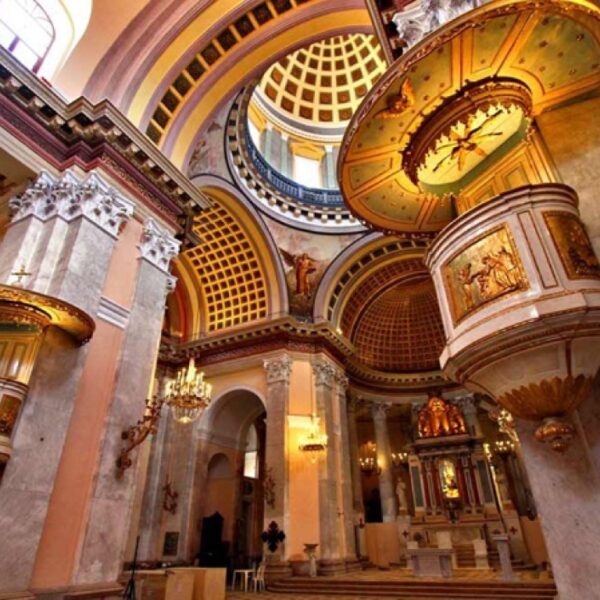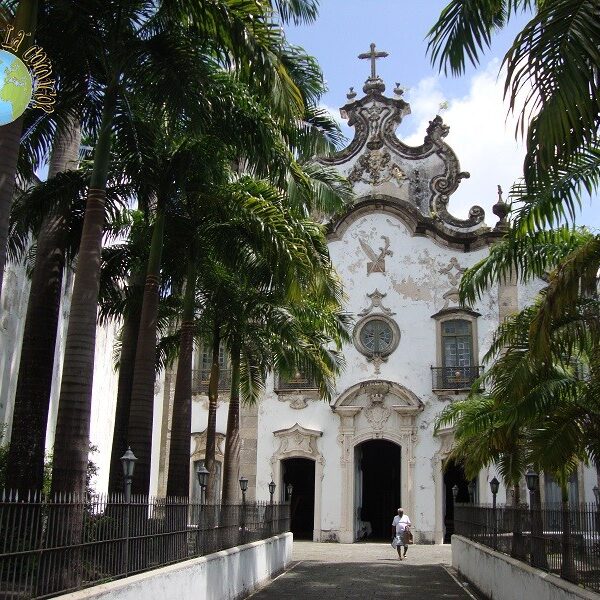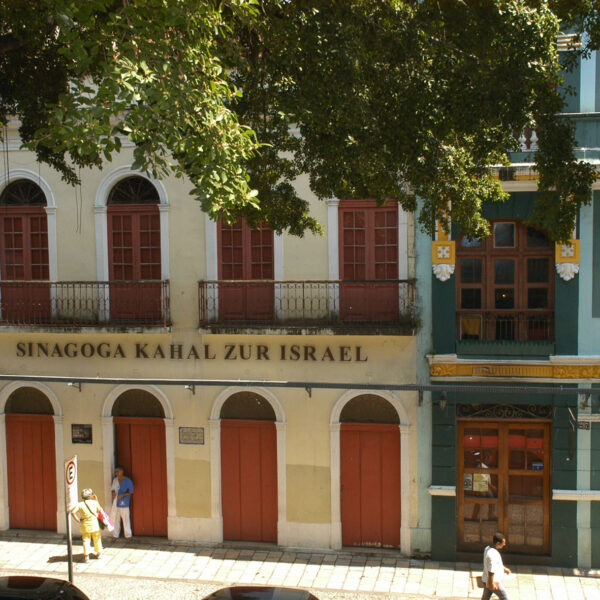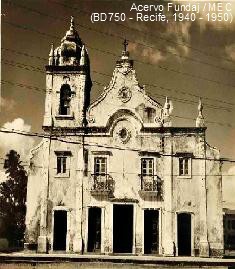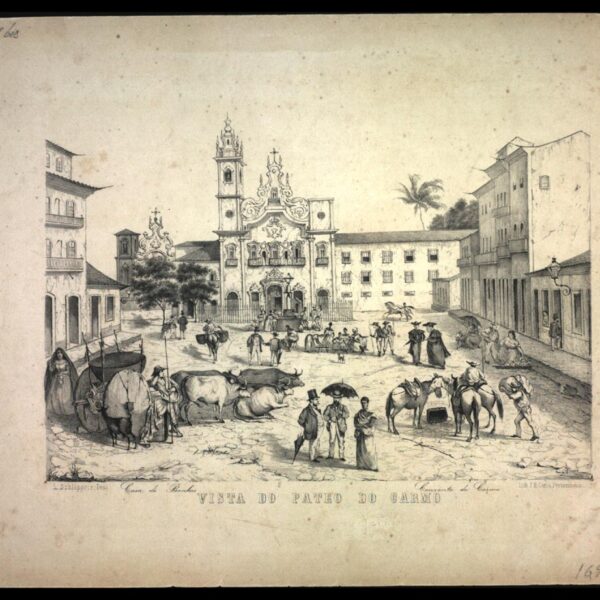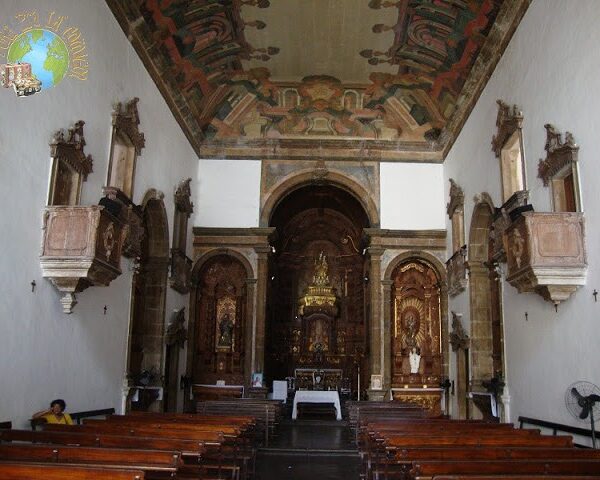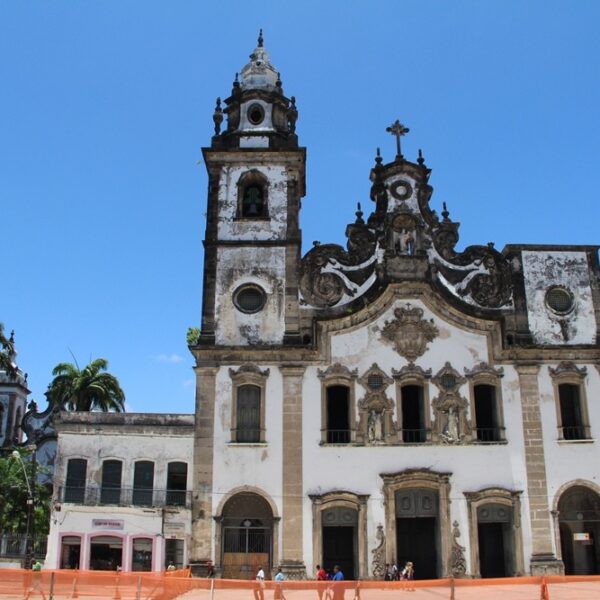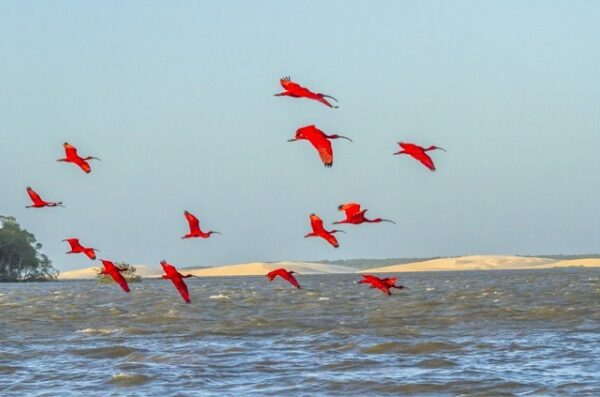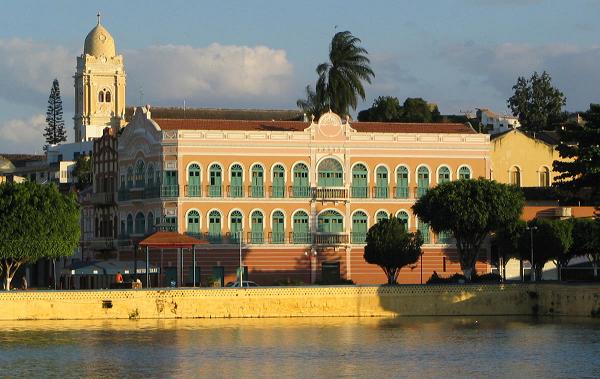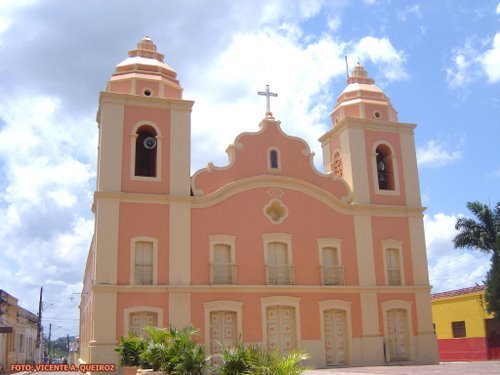The Campo das Princesas Palace, the seat of government of the state of Pernambuco, was built in 1841, originally in the neoclassical style. Over time, however, the building underwent several reconstructions and extensions, incorporating elements characteristic of architectural eclecticism. Neoclassicism was a artistic and literary movement that emerged in the […]
Olinda in Pernambuco
Olinda: Historical and Cultural Heritage
Olinda, located on the coast of Pernambuco, is a historical and culturally rich city known for its preserved colonial architecture, centuries-old churches and vibrant arts and festivities scene. Listed as a UNESCO World Heritage Site in 1982, Olinda offers a unique combination of history, culture and natural beauty.
Olinda is one of Brazil’s most important historic cities, with its valuable colonial houses and one of the most lively carnivals in the country.
A must-see for national and international tourists, Olinda welcomes hundreds of visitors every day who wander up and down its steep slopes and through its narrow streets in search of the exuberant nature and the fourteenth-century architecture that has earned it the title of World Heritage Site.
Olinda’s Main Tourist Attractions
1. Olinda’s Historic Centre
- Cobbled Streets: Strolling through the streets of the historic centre is like stepping back in time, with colourful houses and well preserved colonial buildings.
- Casarões and Sobrados: Many of these buildings house art galleries, studios and craft shops, reflecting the city’s rich cultural production.
2. Historical churches
- Igreja da Sé (Olinda Cathedral): Situated at the highest point of the city, it offers breathtaking panoramic views of Olinda and the sea. Highlights include its exquisite altars and beautiful stained glass windows.
- Convento de São Francisco: The oldest Franciscan convent in Brazil, it includes the Church of Nossa Senhora das Neves, the Capela de São Roque and the Capela de São Francisco.
- Church of São Bento: Famous for its gilded altar, it is one of the most impressive works of Brazilian Baroque religious art.
3. Museums and Cultural Centres
- Museum of Contemporary Art of Pernambuco (MAC-PE): Housed in a former monastery, it has a collection of more than 4,000 works, including artists such as Portinari, Di Cavalcanti and Francisco Brennand.
- Museu do Mamulengo (Mamulengo Museum): Dedicated to the art of popular puppets from the Northeast, with a rich collection of puppets and traditional puppets.
- Casa dos Bonecos Gigantes: A room that houses the famous giant puppets that parade during Carnival, with folkloric figures, celebrities and popular characters.
4. Carnival of Olinda
- Blocos de Rua e Maracatus: One of the most authentic and lively carnivals in Brazil, with frevo, troças, maracatu groups and cultural manifestations.
- Giant Puppets: A century-old tradition. In 2025, more than 100 marionettes were paraded down the slopes of the historic site.
Nature and leisure in Olinda
1. Viewpoints and landscapes
- Alto da Sé: In addition to the church, it offers incredible panoramic views, especially at Sunset, overlooking the sea and Recife.
- Mirante da Caixa D’Água: Another option with privileged views of the historic centre and the coastline.
- Mercado da Ribeira: Near Alto da Sé, great for buying local handicrafts and enjoying the scenery.
2. The beaches
- Praia dos Milagres: Quiet, but with limited infrastructure and the presence of rocks it is less suitable for swimming.
- Casa Caiada Beach: Very popular with locals, with calm waters and basic facilities.
- Praia do Bairro Novo (New District Beach): A better-structured alternative for tourists looking for leisure by the sea.
Cultural events
- Olinda Winter Festival (FIO): Held in August in the Jardim Nascente, with music, film clubs, artistic interventions and exhibitions.
- Craft fairs: Scattered around the historic centre, they offer everything from ceramics to lace-making and embroidery made by local artisans.
Tips for visitors
- Best time to visit: Carnival offers a unique experience, but for those seeking tranquillity, the months of April to November are ideal.
- Transportation: The best way to explore the historic centre is on foot. For longer distances, use taxis or transport apps.
- Accommodation: From historic inns in the city centre to modern hotels near the beaches, Olinda offers a variety of options to suit all tastes.
Giant Puppets and Their Role in Olinda Carnival
The Olinda Carnival in Pernambuco is an important cultural event in the Brazilian scene, characterised by the rhythm of frevo, popular expressions and the presence of giant puppets. The giant puppets were introduced in 1932 with the Midnight Man, and these papier-mâché visual elements have become icons of local cultural […]
Graça Church and Olinda Seminary Historical Significance
The city of Olinda, in Pernambuco, is home to one of the most important landmarks in the religious and educational history of colonial Brazil: the Church of Nossa Senhora da Graça and the Seminary of Olinda. This religious complex dates back to the 16th century and is of great historical […]
Monastery of São Bento de Olinda: A Historic Landmark
São Bento de Olinda Monastery: History, Architecture and Cultural Importance The Monastery of São Bento de Olinda, located in the state of Pernambuco, is one of the most important monuments of the historical, religious and artistic heritage of colonial Brazil. Founded in the context of the Benedictine expansion in the […]
Olinda Cathedral: A Historical Landmark in Brazil
Olinda Cathedral: History and Architecture The Olinda Cathedral, also known as the Church of Saint Saviour of the World, is located in the Historic Site of Olinda and occupies a prominent position in the city’s landscape. As well as being the first religious building constructed by the Portuguese on their […]
Franciscan Monastery of Olinda: A Historic Landmark
Although they had been present in Brazil since the first Portuguese expeditions, the Franciscans did not settle here permanently until several decades later. In this respect, the Franciscan Monastery of Olinda is considered the oldest establishment of the disciples of St Francis on Brazilian soil, the cradle of the Order […]
Discover Pedro II: the enchanted Switzerland of Piauí
Discover the City of Pedro II: Nature, Culture and History in Piauí The city of Pedro II, known as the Switzerland of Piauí, is a charming city located in the north of Piauí, about 200 kilometres from Teresina, the capital of Piauí. The city is famous for its mild climate, […]
Igarassu: Discover the historic city of Pernambuco
Igarassu is a historic city in the state of Pernambuco, Brazil. It is one of the oldest cities in the country, founded in 1535. The city is known for its rich cultural heritage and colonial architecture, especially its historic churches. The city of Igarassu is located in the state of […]
Piauí: A Guide to Its Stunning Attractions
Discover Piauí: An unforgettable tourist experience Live a unique experience in Piauí and discover its incredible tourist attractions, such as the Parnaíba Delta, Sete Cidades National Park, Capadócia Piauiense, Oeiras, Serra da Capivara, Poti River Canyon and the capital Teresina. Kitesurfing, for example, is boosting tourism on the beaches of […]
Serra das Confusões National Park Travel Guide
The Serra das Confusões National Park is a fascinating destination for nature and adventure lovers. Located in the state of Piauí in Brazil, it is the largest national park in the Northeast and offers a rich diversity of landscapes, fauna and flora, as well as impressive rock formations. Still wild, […]
Luís Correia: Explore the Best Beaches in Piauí
Discover the wonders of Luís Correia: Piauí’s coastal paradise Luís Correia is a charming tourist destination on the coast of Piauí, known for its beautiful beaches, rich culture and tranquil atmosphere. With stunning scenery combining sand dunes, coconut groves and crystal clear waters, it’s the perfect place for those seeking […]
Goiana: A Historical Treasure in Pernambuco
The sacred heritage of Goiana in Pernambuco: Preserving stories Goiana, in Pernambuco, was founded in the 16th century and is home to eight churches listed by Iphan. In addition, the Museum of Sacred Art houses a centuries-old collection that preserves the region’s rich history. Historical context As the administrative centre […]
Main historical landmarks of Pernambuco and Recife
Pernambuco and its capital Recife have a rich history, marked by important events that have shaped not only the region, but also Brazil. Pernambuco and its capital, Recife, have a turbulent history. The history of Recife began in 1537: the King of Portugal divided the large colony into strips of […]
Main Tourist Attractions in Recife You Must Visit
Recife, one of Brazil’s oldest cities, was founded by the Portuguese in 1537. With a rich cultural mix resulting from the coexistence of Portuguese, Indians and Africans, the city offers a number of tourist attractions for all tastes. In addition to its beautiful beaches, Recife has a wealth of historical […]
Vale do Catimbau National Park: Your Guide to Ecotourism
Vale do Catimbau National Park: A fascinating ecotourism destination The Vale do Catimbau National Park, located in Pernambuco, is one of the most attractive destinations for ecotourism and adventure tourism in Brazil. With its semi-arid landscape, impressive rock formations, cave paintings and rich biodiversity, the park is a place of […]
Kitesurfing in Barra Grande: The Ultimate Guide
Discover the stunning landscapes and perfect conditions for kitesurfing in Barra Grande, Piauí. This charming village is an ideal destination for water sports and nature lovers. The location The village of Barra Grande is located on the coast of the state of Piauí in northeastern Brazil. It is part of […]
Tracunhaém and Its Rich Clay Handicraft Tradition
Tracunhaém: The capital of ceramics in Pernambuco Tracunhaém is a municipality in the state of Pernambuco, known for its rich clay handicrafts, especially its handmade ceramics. Located in the Agreste region of the state, the town has a strong tradition of handicraft production that goes back several generations. Video – […]
Basilica of Our Lady of Penha: A Historical Overview
History and Architecture of the Basilica of Our Lady of Penha The Basilica of Our Lady of Penha is one of the most important religious temples in Recife, Pernambuco. Located in the São José district, the church is known for its rich history as well as its impressive architecture. Video […]
Church of Santa Teresa D’Ávila da Terceira Ordem do Carmo History
History and Architecture of the Church of Santa Teresa D’Avila da Terceira Ordem do Carmo The Church of Santa Teresa D’Ávila da Terceira Ordem do Carmo is located in the Pátio do Carmo, part of the Holy Recife, next to the famous Basilica of the same name. This sacred space […]
History and Curiosities of the Kahal Zur Israel Synagogue
The Kahal Zur Israel synagogue was founded in the first half of the 17th century. The Israeli community on Rua do Bom Jesus is recognised as the oldest synagogue in the Americas. The remains that prove the existence of this place of worship were found during archaeological excavations between 1999 […]
Church of Nossa Senhora da Boa Viagem History
History of the Church of Nossa Senhora da Boa Viagem in Recife The Church of Our Lady of the Good Voyage, located in Pracinha de Boa Viagem in Recife, was built on the sand of the beach and the first records date back to the 17th century. Video “Church of […]
History of the Basilica of Our Lady of Mount Carmel in Recife
The Basílica de Nossa Senhora do Carmo, located in the centre of Recife, is one of the most important and historic churches in Pernambuco. Its rich history and imposing architecture reflect the deep religious devotion and cultural heritage of the region. History of the Basílica de Nossa Senhora do Carmo […]
History of the Church of Our Lady of the Rosary of the Black Men
The Church of Our Lady of the Rosary of Black Men, located in Recife, Pernambuco, is an important historical and cultural landmark dating back to the Brazilian colonial period. This church is symbolic of its association with the Brotherhood of Our Lady of the Rosary of Black Men, a confraternity […]
Sacred Recife and Religious Tourism in Recife, Pernambuco
Exploring Sacred Recife: A Religious Tourism Route in Pernambuco Sacred Recife is a religious tourism route where visitors can get to know the churches and basilicas, as well as explore the architecture, history, culture and religion. Recife has a sacred art heritage that few cities in Brazil have. History, culture […]
Canary Islands: Explore Piauí’s Natural Beauty
Canary Island: An enchanting destination in the Parnaíba Delta Ilha das Canárias, located in the Parnaíba Delta in Piauí, is an enchanting and relatively unknown tourist destination that offers an authentic experience close to nature. The island is the second largest in the Delta and is part of the Parnaíba […]
Triunfo: The Oasis of the Sertão in Brazil
Triunfo: Explore the beauty and history of Pernambuco’s hinterland Triunfo, located in the state of Pernambuco, Brazil, is known as the “Oasis of the Sertão” due to its pleasant climate, its mountainous landscapes and its rich cultural heritage. This charming city is a destination that combines natural beauty and history, […]
Serra Talhada: A Journey Through Pernambuco’s Culture
Serra Talhada: The Capital of Xaxado and the Birthplace of Lampião Serra Talhada is known as the capital of Xaxado and the birthplace of Lampião. Located in the backlands of Pernambuco, the city offers a rich mix of history, culture and natural beauty. Historical and cultural importance The town of […]
Petrolina: Exploring Its Wine and Tourism
Discover Petrolina: The jewel of Pernambuco’s Sertão, land of wine and exuberant fruits Petrolina is an important municipality located in the interior of the State of Pernambuco in Northeastern Brazil. Situated on the banks of the São Francisco River, the city has a dynamic economy, a strong agricultural sector and […]
Museu do Homem do Nordeste: A Cultural Journey
The Museu do Homem do Nordeste, located in Recife, Pernambuco, is an important cultural and historical centre that offers a rich insight into the culture, history and society of the Northeast of Brazil. Founded in 1979, the museum is maintained by the Joaquim Nabuco Foundation (Fundaj) and is dedicated to […]
Route of the Sugar Mills and Maracatus in Pernambuco
The Route of the Sugar Mills and Maracatus takes visitors on a tour of the rural Zona da Mata Norte of Pernambuco, an area rich in engenhos and maracatus. Journey to the origins Travelling along the Route of the Sugar Mills and Maracatus in the Zona da Mata of Pernambuco […]
Cais do Sertão Museum: Discover Sertanejo Culture
The Cais do Sertão Museum, located in Recife, is a cultural space dedicated to the appreciation and preservation of Sertanejo culture, especially the life and work of Luiz Gonzaga, the King of Baião. Opened in 2014, the Cais do Sertão Museum is one of the most modern and interactive in […]
Discovering the Untouched Beauty of the Poti River Canyon
The Poti River Canyon, located on the border between the states of Piauí and Ceará, is one of the most impressive landscapes in the north-east of Brazil. This little-explored tourist destination offers visitors a combination of natural beauty, adventure and history, making it an ideal location for ecotourism and outdoor […]
Recife of the Dutch and Dutch Invasion in Brazil
Recife dos Holandeses began with the Dutch invasion that was part of the Dutch project to occupy and administer the Brazilian Northeast through the Dutch West India Company. In 1624 the Dutch had already created the West India Company and started plans for the expansion of their overseas domains in […]
Exploring the Breathtaking Parnaíba Delta in Brazil
The Parnaíba Delta, located between the states of Piauí and Maranhão, is one of Brazil’s most impressive regions. It is the only open sea delta in the Americas and the third largest in the world, after the Nile and Mekong delta. Formed by the Parnaíba River, which splits into five […]
The Sertão of Pernambuco has several tourist and cultural attractions
Pernambuco’s Sertão and São Francisco are the largest regions of Pernambuco, occupying 70% of Pernambuco’s territory. The Sertão is divided into six micro-regions: Araripina, Salgueiro, Pajeú, Moxotó, Petrolina and Itaparica (we will see below). In general, its economy is based on livestock and subsistence crops. The Sertão is the region […]
The cities of the Zona da Mata were born around the large sugar cane mills
The cities of the Zona da Mata were born around the large sugar cane mills. The cities of the Zona da Mata of Pernambuco were born around the large mills and mills of sugar cane and grew structuring themselves to provide products and services required by the southern sugarcane complex. […]
The Charm of Olinda: History and Festivals
Olinda has valuable colonial houses, architecture, history and carnival. Olinda in Pernambuco is one of Brazil’s most important historical cities, Olinda brings together valuable colonial houses and hosts one of the liveliest festivals of Carnival in the country. It is at the same time the city of friars and nuns, […]
Exploring the Charm of Recife: A Historical Journey
Born on the quayside from a natural anchorage, Recife began to expand in 1537 towards the neighbourhoods today called Santo Antonio and São José. The surrounding sugar cane mills gave rise to neighbourhoods such as Graҫas, Madalena and Casa Forte, always on the banks of the Capibaribe River, which cuts […]
